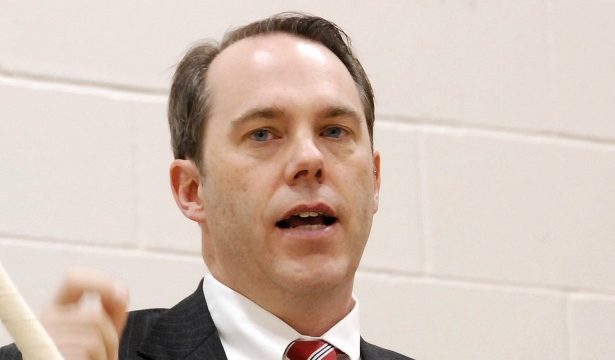Why Are We Counting People Charged, Not People Convicted, For Western North Dakota Crime?

“Number of federal defendants up 31% in western North Dakota,” reads the Mike Nowatzki headline in the Fargo Forum. The numbers were released by North Dakota’s hyper-partisan US Attorney Tim Purdon (you know, the duck guy) who says “I don’t expect that to stop anytime soon.”
First, this is an odd metric to use. The number of defendants in a case is somewhat arbitrary. As Nowtazki reports, “the number of criminal cases filed in the Minot-based northwest region and Bismarck-based southwest region actually decreased by three cases from 2012 to 2013.” Why would defendants be the headline, and not the number of cases?
It almost seems like a hyper-partisan US Attorney with a history of being anti-oil is cherry-picking the worst sounding statistics for the oil patch region.
Also, nowhere mentioned in the article are prosecution success rates. How many of these people being charged are actually being convicted? Half? Most? All? Purdon doesn’t seem to be offering, and Nowatzki apparently didn’t ask.
And then there’s this:
While the number of defendants was up 31 percent in the west last year, the Fargo-based southeast region and Grand Forks-based northeast region saw a combined decrease of 24 percent, from 202 to 154 defendants.
The number of criminal cases filed in the east also fell from 125 to 97, which Purdon attributed in part to shifting resources from his office and from federal law enforcement agencies to the west.
There is always a danger in crime statistics being skewed by the actions of law enforcement. “If you put more cops on the street, you get more arrests,” the saying goes. But more arrests doesn’t necessarily mean crime is up or down. It just means the cops are arresting more people, and arrests or even the charges metric cited in the article doesn’t tell us anything about how many people are actually guilty.
Would the number of federal criminal charges in eastern North Dakota have rivaled western North Dakota had the same level of resources been applied in both areas? Maybe.
The article points to one federal law enforcement operation in western North Dakota – “Operation Winter’s End” – that resulted in charges for 40 people. That single operation is 50% of the increase in the number of people charged in western North Dakota.
I’m not saying that crime isn’t up in western North Dakota. You can’t pack more people – especially those who tend to skew toward the young and male ends of the demographic scales – into an area without getting more crime. But this is a complicated issue, and there are mitigating circumstances, not the least of which is how federal law enforcement chooses to do its job.
Complicating all of this is a thoroughly political US Attorney who, based on past actions, seems very interested in creating a very negative perception of crime in western North Dakota.




